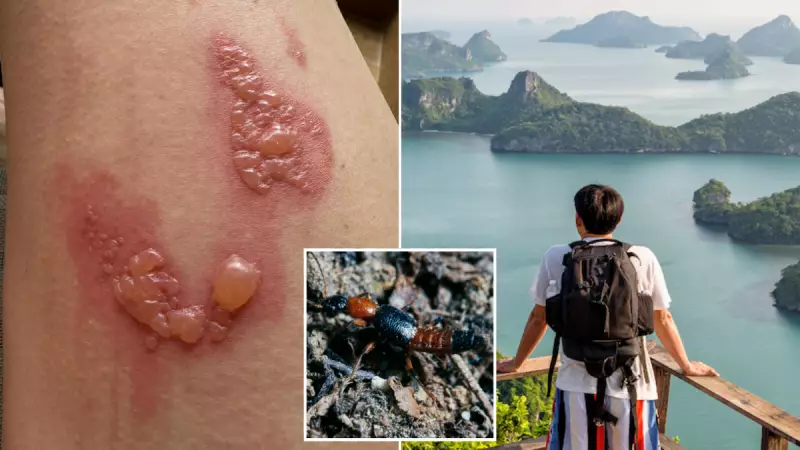
A dream holiday in Bali turned into a painful nightmare for an Adelaide mother after a terrifying encounter with a tiny but potent beetle left her with agonising rashes and blistering burns.
A Holiday Turned Sour
Gabrielle Vanessa was travelling from Canggu to Nusa Dua in south Bali on November 8 when her ordeal began. She first noticed a suspicious red rash forming on her right thigh, which was quickly followed by a sharp, stabbing pain. While the initial intense pain subsided by the next day, that was only the beginning of her health scare.
Shortly after, a series of large, angry red blisters began to develop across the rash site. Almost a fortnight later, the Adelaide woman is still dealing with the aftermath, describing the marks as looking like burn patches on her legs.
The Unseen Danger: The Tomcat Beetle
Baffled by what had caused such a severe reaction, Vanessa turned to social media for answers. The overwhelming response from fellow travellers pointed to a culprit she had never heard of: the tomcat beetle. This rove beetle, rarely longer than 1cm, is known for its distinctive red and black segmented body.
The seemingly innocuous insect carries a toxin called pederin, which is reportedly stronger than cobra venom. The critical difference, however, is in the delivery. Unlike a cobra that must bite, tomcat beetles do not bite or sting. The toxin is spread simply by the beetle rubbing against skin or, more commonly, when it is accidentally crushed against the body.
"I had never even heard of a tomcat beetle and I've been to Bali 10 times before," a surprised Vanessa told 7NEWS.com.au.
Ongoing Recovery and Crucial Safety Advice
Weeks after the initial incident, Vanessa's recovery is not yet complete. "I have patches of red and brown pigmentation appearing on different parts of my body and some spots are still spreading, so it's definitely not completely over yet," she explained. She fears the visible damage may scar or take many months to fade.
Despite her painful experience, Vanessa doesn't want to deter people from visiting Bali, but she strongly believes travellers need to be informed. She warns tourists to be particularly vigilant at night, as the beetles are attracted to lights in hotels and restaurants.
Her key piece of advice is simple: "Don't touch them or crush them against your skin, just gently blow them away."
For anyone who does come into contact with the beetle's toxin, the American Osteopathic College of Dermatology recommends immediately washing the irritated area with cool, soapy water. It is also crucial to seek medical attention promptly, as a topical steroid may be required to manage the severe reaction and prevent long-term skin damage.





